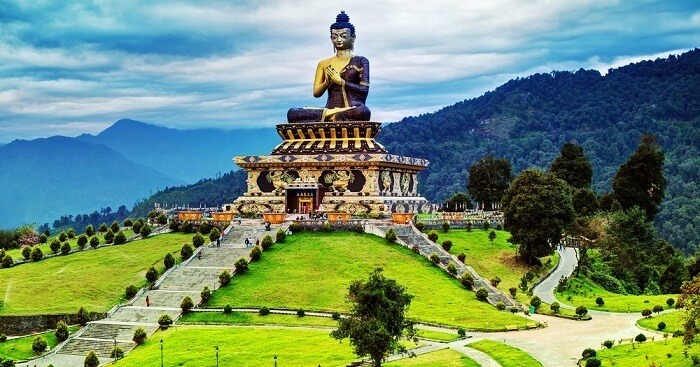North East India is a region of breathtaking natural beauty, rich cultural diversity, and varied climates that offer unique experiences throughout the year. From the lush landscapes of Assam to the serene hills of Sikkim, the best time to visit North East India largely depends on the kind of adventure or relaxation you seek. This guide will walk you through the seasonal highlights of this enchanting region, helping you plan your trip to match your interests and preferences.
Winter (December to February)
Winter is arguably the most popular time to visit North East India, especially for travelers who enjoy crisp weather and clear skies. The temperatures during this season are quite pleasant, ranging from 5°C to 15°C in the lower altitudes, while the higher regions can experience temperatures well below freezing. This is an excellent time for exploring the picturesque landscapes, as the cool weather makes outdoor activities more enjoyable.
For instance, Gangtok, the charming capital of Sikkim, becomes a winter wonderland during these months. If you’re planning a short trip, a Gangtok tour package for 3 days can offer you a delightful experience of the city's serene beauty and vibrant culture. The winter months are also perfect for trekking and sightseeing in Sikkim, with clear views of the majestic Kanchenjunga, the third highest peak in the world. The snow-capped mountains and clear blue skies create an idyllic backdrop for photography and exploration.
Spring (March to May)
Spring is another fantastic time to visit North East India, as the region starts to warm up and the flora begins to bloom. This season is marked by mild temperatures and a burst of color in the landscape. The average temperatures range from 15°C to 25°C, making it comfortable for sightseeing and outdoor activities. This is also when the region’s many flower festivals, such as the famous Rhododendron Festival in Sikkim, take place, adding a vibrant touch to the already stunning scenery.
Spring is particularly ideal for visiting destinations like Kaziranga National Park in Assam, renowned for its population of one-horned rhinoceroses and diverse wildlife. The park's lush greenery is at its peak, and the moderate weather enhances your wildlife viewing experience. Similarly, the blooming flowers and pleasant weather make it an excellent time for a Gangtok tour package for 3 days. This package can include visits to various attractions such as the Enchey Monastery, the beautiful Tsomgo Lake, and the bustling local markets.
Summer (June to August)
Summer in North East India can be quite diverse, with varying temperatures depending on the altitude. In the lower regions, temperatures can soar to 30°C or higher, while the higher altitudes remain relatively cool. This season is ideal for escaping the sweltering heat of the plains and enjoying the cool, refreshing climate of the hill stations.
The monsoon season, which starts in June and continues through August, brings heavy rainfall to the region. While this may pose some travel challenges due to occasional landslides and road blockages, it also rejuvenates the landscapes, making the region look lush and green. The monsoon rains enhance the beauty of places like the Seven Sisters Waterfalls in Meghalaya, turning them into spectacular cascades.
If you don’t mind getting a little wet and are keen on experiencing the verdant beauty of the region, summer can be a good time to visit. Just ensure you are prepared for the weather conditions and plan your travel itinerary accordingly.
Autumn (September to November)
Autumn is another prime season for visiting North East India, as the monsoon rains taper off and the region starts to dry up. The weather during this period is pleasant, with temperatures ranging from 10°C to 25°C. The skies are clear, and the landscape is lush and green, offering the perfect setting for sightseeing and outdoor activities.
This is an excellent time for exploring the rich cultural heritage and natural beauty of the region. You can enjoy the local festivals, such as the Bihu festival in Assam or the Dassain festival in Sikkim, which offer a glimpse into the vibrant traditions and customs of the local communities. Autumn is also ideal for trekking, with trails being less slippery and the weather providing a comfortable climate for long hikes.
In summary, the best time to visit North East India largely depends on your preferences and the type of experience you’re seeking. Whether you’re drawn to the winter chill, the spring bloom, the summer green, or the autumn clear skies, each season offers a unique opportunity to explore and enjoy this beautiful region. From serene hill stations like Gangtok to the lush landscapes of Kaziranga, North East India is a destination that promises unforgettable experiences year-round.
With this guide, you can plan your visit to make the most of what North East India has to offer, ensuring a memorable and enjoyable trip no matter when you choose to go.





Comments